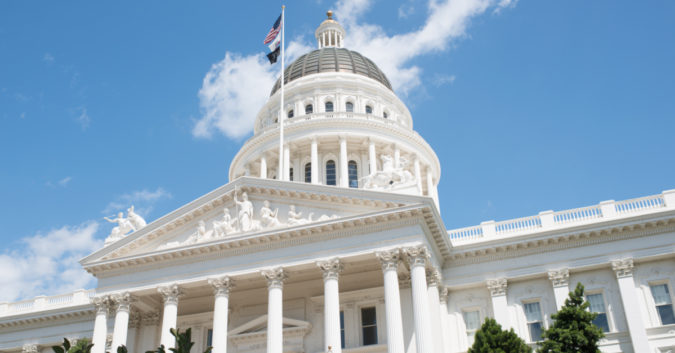As of January 1, 2020, survivors of childhood sexual abuse have more time to come forward against their abuser(s) in the state of California.
The previous statute of limitations on such crimes has been extended and a “lookback window” has been opened, which allows people who were abused as children to file claims for the next 3 years, regardless of when the abuse occurred.
The new law, California Assembly Bill 218 (A.B. 218), was authored by Assemblywoman Lorena Gonzalez and signed into law by the state’s governor last October.
“The idea that someone who is assaulted as a child can actually run out of time to report that abuse is outrageous,” Gonzalez said in a statement, continuing:
“More and more, we’re hearing about people who were victims years ago but were not ready to come forward to tell their story until now. We shouldn’t be telling victims their time is up when in reality we need them to come forward to protect the community from future abuse.”
In California, those who suffered sexual abuse as a child — no matter when it occurred — now have the legal power to file a claim. The hope is that long-silenced survivors will finally be able to secure the support they need.
The bill, which mirrors those passed by other state legislatures, gained support as institutions like the Catholic Church and Boy Scouts of America (BSA) continued to be implicated in large-scale, long-term coverups of pervasive child sex abuse.
What Are the Major Changes in the new CA Abuse Law?
There are several parts to A.B. 218, all of which give survivors of childhood sexual abuse more opportunities to seek justice.
These opportunities include:
- Creating a 3-year lookback window for child sex abuse claims: Starting on January 1, 2020, survivors have 3 years to file claims, regardless of when the alleged abuse occurred.
- Revising the statute of limitations for child sex abuse claims: Survivors can file claims until they are 45 years old (it used to be 26 years old) or within 5 years of discovering that damages they suffered as a result of the alleged abuse (it used to be 3 years).
- Providing for the recovery of “treble” damages if there was a coverup: A survivor may be awarded up to triple (treble) the amount of damages if a defendant is found to have covered up the sexual abuse of a minor.
What Does California AB 218 Mean for Survivors of Child Sexual Abuse?
In the last several years, Church authorities have released the names of some 5,300 credibly accused priests. Much of the abuse documented by these lists took place decades ago. At that time, the Church wielded a tremendous amount of political power, both on the world stage and in local communities.
While the Church remains a powerful institution, those who were children during the middle of the 20th century remember a time where the Church’s authority was publicly unquestioned and its reputation untarnished.
For many years, those who spoke were silenced, and many more were too young to realize they had been harmed. It is now well understood that some priests used their position of power and access to groom children for sexual abuse. Instead of alerting families, the Church covered up the crimes and enabled the abuser to continue causing children permanent damage.
This is why the new laws are so important. Many survivors are only now drawing a connection between their abuse and current psychological injuries. They have had to deal with a secret crime that was hushed up by their Church and hidden from their family and community.
A Growing Movement to Give Survivors a Voice
California is hardly the only state rewriting its laws to empower survivors. In the past 2 years, 15 states have made significant revisions to their statute of limitations concerning childhood sexual abuse and assault.
The following states have created lookback windows:
- Arizona
- California
- Hawaii
- Montana
- New Jersey
- New York
- North Carolina
- Vermont
The following states have extended the amount of time people have to file after they reach adulthood:
- Alabama
- Connecticut
- Michigan
- Pennsylvania
- Rhode Island
- Tennessee
- Texas
Filing a Lawsuit Against the Church
For many years, strict statutes of limitations prevented victims of abuse from seeking justice and helped the Catholic Church avoid accountability. Even now, after so many horrific revelations about abuse and coverup, the Church refuses to come clean.
A recent investigation by the Associated Press found more than 900 clergy members who were credibly accused of child sexual abuse that weren’t named in the official lists released by the Catholic officials of various dioceses across the country.
While it would be nice to think that the Church had started putting survivors ahead of its reputation, that remains to be seen. Those who have been injured by the Church deserve a chance to make their case, no matter when the crime occurred.
Filing a successful clergy abuse lawsuit is a complex process, but it may offer survivors a path to compensation. With the help of a knowledgeable and understanding team, survivors can secure the treatment and support they need to move forward.
